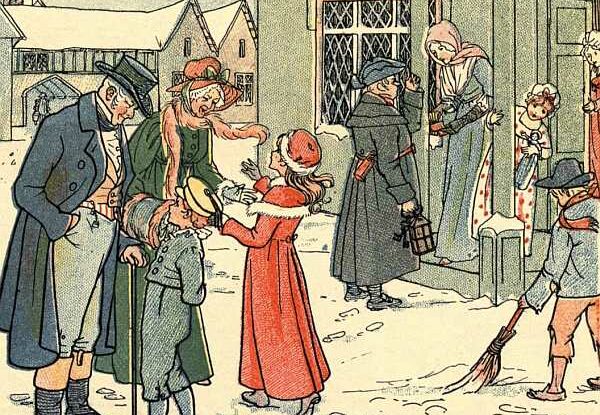Another year, another Christmas in the books. Time to take a long breath, box up any fugitive leftovers, and plunge into a frantic flurry of after-Christmas sales? Not so fast.
In our all-too-secular society, it’s easy to let the commercial calendar define the holiday. Panicked, last-minute shopping and maybe a midnight mass on the 24th. A large but often stressful celebration on the 25th. And that’s all she wrote.
But our ancestors saw things differently, and we get hints of this from cultural artifacts like The Twelve Days of Christmas, a carol first published in the 18th century with enough staying power that Bing Crosby adapted it in 1949. Far from being over, the carol is a reminder that, if we want to cleave to our old traditions, Christmas is not finished on the 26th – this is just day two of twelve!
Figuring out how to celebrate the Second Day of Christmastide in America is another matter, with Mammon and, if we’re being completely honest, the somewhat excessively buttoned-down Puritans having chipped away a lot of the Old World traditions.
THE GIVING DAY.
In Great Britain – the Puritans’ mother country – things are a little clearer: December 26th was and is Boxing Day. The name might come from alms being collected from church poor boxes and distributed to the needy on the 26th; it might come from more recent traditions in which the wealthy would prepare Christmas boxes with money, gifts, and food for servants and tradesmen who had to work on the 25th but could return to their families on the 26th. As with many venerable holidays, the exact origins are unclear.
So far, Boxing Day has only caught on in Massachusetts in the U.S, but we could do a lot worse than giving some of our time and energy to the less well-off to mark the Second Day of Christmas, after a First Day focused on giving to (and receiving from) our own family and friends.
ALL THE WAY BACK.
Of course, the Second Day of Christmas was the Second Day of Christmas long before Boxing Day. Originally it was – and for many it still is – Saint Stephen’s Day.
St. Stephen has a special place in the early Church and its martyrs, because, according to tradition, he was its first martyr after the Resurrection. A man “full of faith and power,” his story is told in the Book of Acts, which describes how he defied the religious authorities of his day, condemned them for rejecting the true faith, and was stoned to death for his trouble.
Still, as the Son prayed to the Father to forgive his executioners, so did St. Stephen cry out: “Lord, do not charge them with this sin.” Among the martyr’s persecutors was Saul of Tarsus – the future Saint Paul – putting an exclamation point on an extraordinary but now little-remembered story.
Boxing Day’s status as a giving day has its roots in the older giving traditions of St. Stephen’s Day. Another old carol, Good King Wenceslas, describes Wenceslaus I of Bohemia – who would himself become a saint and martyr – once “looked out, on the Feast of Stephen,” and saw a poor man gathering firewood in the snow. The king and his page gathered food, wine, and fuel for the man themselves, and ensured he was able to enjoy the day in style.
The carol’s final stanza outlines the message of Christmastide’s giving day about as well as possible: “Therefore, Christian men, be sure, wealth or rank possessing, Ye who now will bless the poor, shall yourselves find blessing.”
Merry Christmas!


